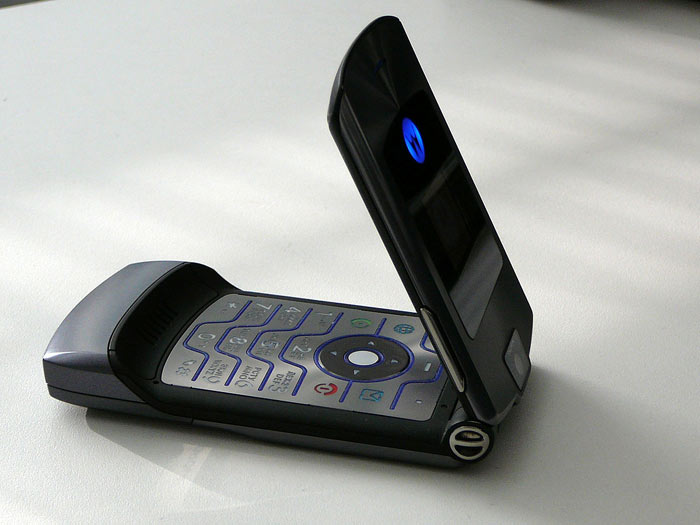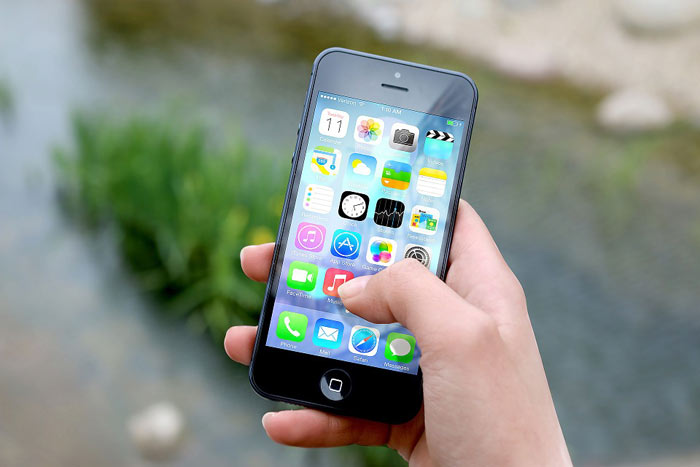When the rest of the Internet is busy with the latest Apple announcements and the Pixel Ultra controversy, let’s remove ourselves from the madness and cast our minds back to 2005. It was a simpler time when a Cheeto-orange reality TVstar wasn’t the president and Pluto was still a planet. It was also a year when the Motorola Razr, LG VX6100, Sony Ericsson Walkman, and the BlackBerry 7100t were the top-selling choices for those looking to get a phone.

If you don’t remember these handsets, look them up in a Google Image search. The results will show four distinctive phones that look nothing alike. Now do the same for the top-selling phones for 2018. You’ll find images sporting a slight variation on the same black rectangle. If your phone has always been a method of self-expression, you may be wondering where it all went wrong. The answer is hardware parity.
The iPhone ushered in a new design curriculum
In 2005 — six year before Jobs would debut the first iPhone — manufacturers were experimenting with flip-phones, sliding QWERTY phones, round phones, candy-bar phones, and more. Those were the days before smartphone parity levelled the diverse ecosystem of phones—a razing of which left behind only three names to carry the mantle of innovation:
Samsung, Google, and Apple. Since then, every other manufacturer has trailed in their wake, striving to match their look and performance.
Ben Wood of CSS Insight believes Apple is singularly at fault above all other manufacturers for this issue.
“[T]he world changed in 2007 when Steve Jobs pulled the iPhone out of his pocket and had what became the dominant design,” Wood said.
“We’ve since gravitated to the black rectangle with a touchscreen as the form factor of choice, and it feels like we’ve now reached a technology plateau where firms compete by offering marginal changes around the edges.”
The result? A market of cellphones that shows very few exceptional designs
The only thing remarkable about new flagships is how similar they are in terms of specs — handsets that share near-identical modem throughput, display quality, processor speed, and megapixels. Smartphones have been driving towards the same hardware focal point, opting for reliability through streamlined innovation over a daring crack at messy individuality.
People are fed up and looking for ad-hoc solutions
 When it comes around to upgrading your phone, you face a hard decision. Instead of choosing between drastically different phones that appeal to drastically different users, you’re stuck nitpicking the differences found between millimeters, megabytes, and pixels. Whatever you choose, you’ll have a black rectangle with a touchscreen that measures somewhere between five and six inches.
When it comes around to upgrading your phone, you face a hard decision. Instead of choosing between drastically different phones that appeal to drastically different users, you’re stuck nitpicking the differences found between millimeters, megabytes, and pixels. Whatever you choose, you’ll have a black rectangle with a touchscreen that measures somewhere between five and six inches.
Those who value their mobile individuality will have to look beyond the major manufacturers for an opportunity for self-expression. They’re turning to companies like dbrand for a unique decal to wrap around their phone. Decals, or skins as they’re also called, are thin vinyl accessories that attach to popular phones like the Galaxy Note 9 using authentic 3M vinyl. This material uses special adhesives so as not to leave behind residue or other damage once it’s replaced. You can find quick custom options for your Galaxy Note 9 in 32 distinct textures with thousands of combination options. Instead of the typical shiny black of the natural Galaxy, these Note 9 skins come in carbon fiber, black camo, stone, metal, and true color options.
For changes that go beyond skin deep, you can download apps that alter the theme of your phone to create a unique inner world. It’s a little easier to do on an Android than an iPhone, as the Android OS is an open source system while iOS is not.
You’ll find a modest list ofchanges through the phone’s basic settings, but for more complex alterations, you’ll want to check out a guide for help. Brian Berret from Wired offers his guidance in customizing your Android with tips that include changes to your software launcher, wallpapers, and keyboards. Android Central has its own guide with other insights into personalization that can come in handy.
For now, these are the tools you have to customize your user experience with your smartphone. Luckily, the dark ages of hardware innovation are soon to be over. There’s a light at the end of the tunnel as the biggest manufacturers explore the limits of machine learning and apply for patents on bendable, foldable, or rollable touchscreens. These display experiments could usher in a new age of innovation that harkens back to the early noughties.
 Until then, you’re stuck with the Galaxies that look like iPhones that look like Pixels that look like OnePluses. At least there’s a silver lining to the wait; when all phones are the same, there’s no “bad” choice. You’ll always have a capable handset in your back pocket.
Until then, you’re stuck with the Galaxies that look like iPhones that look like Pixels that look like OnePluses. At least there’s a silver lining to the wait; when all phones are the same, there’s no “bad” choice. You’ll always have a capable handset in your back pocket.










